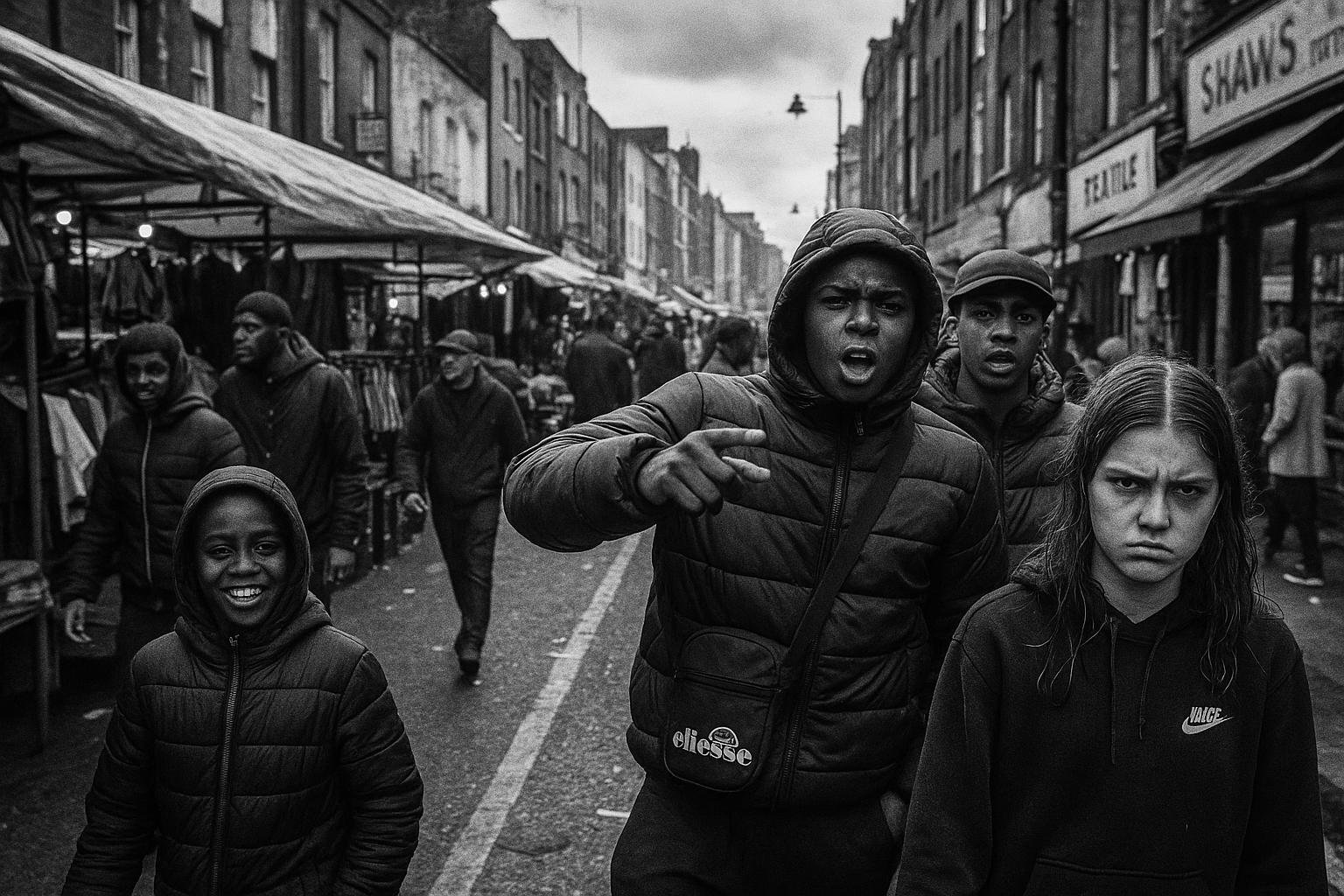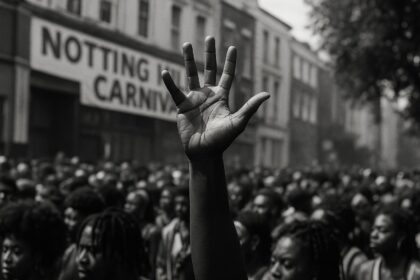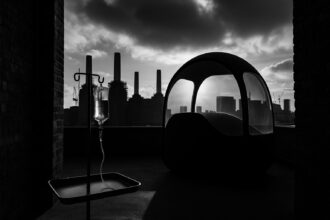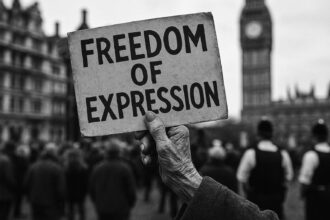The newly expanded edition of Simon Wheatley’s Don’t Call Me Urban chronicles grime’s formative years from 1998 to 2010, capturing the vibrant, gritty youth culture of East London before the scene’s mainstream rise and the area’s gentrification.
On an overcast Thursday morning in east London’s Roman Road, photographer Simon Wheatley strolls through the market buzz with a grin, buoyed by the vibrant strains of 70s funk echoing from a nearby stall. This area, once the chaotic heartbeat of grime—a burgeoning music and cultural movement in the early 2000s—served as the fertile ground where artists like Wiley and Dizzee Rascal emerged. It was here that Wheatley, then a struggling photographer in his twenties, began to document the scene intimately, capturing not just the music but the everyday lives and struggles of working-class youths before the area’s gentler transformation.
Wheatley’s photographic journey into grime began merely by stepping out his front door in Limehouse and engaging with his neighbours. While mainstream media and political discourse at the time often villainised these youths as “hoodies” or “chavs,” Wheatley’s lens offered a different narrative—one of complexity, creativity, and resilience. His work for Black music magazine RWD earned him “hood pass” credibility, enabling him to build trust and gain access to pivotal moments within the scene: the rough-and-tumble energy of Roll Deep’s ice-cream van photo shoot, Skepta at a chip shop, Kano as Scarface, and early portraits of Tinchy Stryder with Ruff Sqwad at school. These images, alongside scenes of pirate radio battles, street fights, and intimate domestic moments, created a multifaceted social document that has been dubbed grime’s “Old Testament” by some.
Fourteen years after the initial release, Wheatley’s photobook Don’t Call Me Urban! The Time of Grime is being reissued in an expanded form nearly twice its original size. The new edition boasts 352 pages of high-quality prints and newly edited archive material that delve deeper into the formative years of grime from 1998 to 2010. The book not only charts the rise of grime as a musical force but also paints a vivid portrait of the social landscape and youth culture of East London at a time of stark post-Thatcherite social fragmentation. Wheatley’s visual narrative reveals grime as more than a genre—it was an expression of community, individualism, hope, frustration, and the everyday realities faced by a generation often ignored or maligned.
Wheatley emphasises the textural realism of grime life, seen in overcrowded youth clubs, late-night pirate radio studios littered with fast-food wrappers and flyers, and the streets where teenagers cycled, rapped, and dreamed in tough urban environments. He reflects that while grime artists today, like Stormzy, have achieved superstar status, the early pioneers were once treated as an underclass, a point often forgotten in the music’s mainstream acceptance. This socio-cultural backdrop adds layers of significance to Wheatley’s work, which captures not only burgeoning talent but also the grit, anxiety, and camaraderie underpinning the scene.
The photographer’s approach is marked by an immersive, physically dynamic style, drawing on his background in sports and martial arts to capture the restless energy of his young subjects. This zeal sometimes led him into precarious situations—encountering knife-wielding youths or standing amidst orchestrated street fights—yet his naivety and outsider status afforded him a unique vantage. Influenced by war photojournalist Philip Jones Griffiths, Wheatley has always embraced risk to tell authentic stories, whether in East London or far-flung global hotspots.
Wheatley’s photographs have grown beyond their initial role as documentation to become emblematic of Black British musical and urban heritage. The original Don’t Call Me Urban book quickly sold out after its 2011 release, with copies fetching high prices on resale markets. The cult status inspired streetwear brand Corteiz founder Clint Ogbenna (Clint 419) to support the new edition and use Wheatley’s imagery as creative inspiration for fashion—a testament to the enduring cultural impact of these visuals beyond music. Wheatley himself appreciates the significance of this legacy but stresses he avoids romanticising pre-gentrification East London. While not lamenting the area’s transformation, he acknowledges the powerful cultural atmosphere of what once felt like a “playground of hope, frustration and despair” amid urban decay.
Combining a deep sociological insight with an undeniable artistry, Simon Wheatley’s expanded photobook offers an essential record of grime’s roots and the everyday lives that shaped it. It stands as a vivid, sometimes raw reflection of a youth culture that once raged against social neglect and has since profoundly influenced British music and identity.
 Reference Map:
Reference Map:
- Paragraph 1 – [1]
- Paragraph 2 – [1], [5], [7]
- Paragraph 3 – [1], [2], [3]
- Paragraph 4 – [1], [4]
- Paragraph 5 – [1], [5]
- Paragraph 6 – [1], [5], [7]
- Paragraph 7 – [1], [2], [6]
- Paragraph 8 – [1], [6]
Source: Noah Wire Services
- https://www.theguardian.com/artanddesign/2025/jun/20/dont-call-me-urban-grime-photographer-simon-wheatley – Please view link – unable to able to access data
- https://www.backdooreditions.com/products/silverlink-copy – Backdoor Editions offers the 2025 reissue of Simon Wheatley’s ‘Don’t Call Me Urban! The Time of Grime’, a comprehensive photographic document of the early grime era. This expanded edition features 352 pages, nearly doubling the original size, and includes newly edited archive material, updated image production, and a fresh layout. The book provides intimate access to the people and places behind the movement and the social landscape from which the genre emerged, covering the formative years of grime from 1998 to 2010. Published under Wheatley’s imprint, it also features an introduction from Clint419, founder of the Corteiz label, who credits Wheatley with being the visual inspiration for his brand.
- https://www.bbc.com/news/in-pictures-13608668 – BBC News presents a collection of Simon Wheatley’s photographs from his book ‘Don’t Call Me Urban! The Time of Grime’, capturing the essence of London’s grime scene. The article discusses Wheatley’s approach to documenting the youth culture, highlighting the isolation and tension within many of his frames. Wheatley explains that the title of his work is inspired by the discrepancy between the ‘cool’ perceptions of black culture and the often harsh reality of being born black on a London council estate. The project began as a study of council estate architecture but evolved into a social document of London’s inner-city youth.
- https://www.frieze.com/article/ghetto-mind – Frieze magazine explores the themes in Simon Wheatley’s ‘Don’t Call Me Urban’ photobook, focusing on the portrayal of youth culture in the E3 grime scene. The article examines Wheatley’s photographs of figures in the grime scene, playing up to the camera, brandishing knives, and swearing at CCTV masts. It discusses the liminal concept of reality in these images, balancing between what these youths are and what they want to be. The piece reflects on the social dynamics and the influence of grime culture on London’s youth.
- https://www.dazeddigital.com/music/article/55763/1/simon-wheatley-grime-skepta-kano-lost-dreams-wiley-giggs-london – Dazed Digital features an interview with photographer Simon Wheatley, who has been documenting the grime world since the genre’s inception. The article discusses Wheatley’s journey into the grime scene, his collaborations with artists like Dizzee Rascal, Skepta, and Wiley, and the release of his photobook ‘Don’t Call Me Urban! The Time of Grime’ in 2010. It also touches upon his upcoming projects, including a second grime-related book ‘Lost Dreams’ and plans for a third anthology of the scene from its beginnings to the present day.
- https://abbeyroadmusicphotographyawards.com/judges/simon-wheatley – The Abbey Road Music Photography Awards profiles Simon Wheatley, acknowledging him as one of the most influential UK photographers of the 21st century. The article highlights Wheatley’s work documenting London’s youth culture, culminating in his book ‘Don’t Call Me Urban! The Time of Grime’ in 2010. It also mentions his recent collaboration with the UK streetwear brand Corteiz, which reinforced his reputation in the fashion and music photography scene. The piece details his exhibitions, including ‘Silverlink’ at the Leica gallery in Mayfair, and his role as a judge for the subcultural category at the Music Photography Awards.
- https://www.dazeddigital.com/photography/article/10534/1/don-t-call-me-urban-simon-wheatley – Dazed Digital interviews Simon Wheatley about his photobook ‘Don’t Call Me Urban! The Time of Grime’, which documents London’s grime scene. Wheatley discusses the inspiration behind the book, the challenges of gaining access to the youth culture he was photographing, and the experiences that led to the creation of the work. The article provides insights into Wheatley’s approach to photography and his perspective on urban life and culture.
Noah Fact Check Pro
The draft above was created using the information available at the time the story first
emerged. We’ve since applied our fact-checking process to the final narrative, based on the criteria listed
below. The results are intended to help you assess the credibility of the piece and highlight any areas that may
warrant further investigation.
Freshness check
Score:
10
Notes:
 The narrative is fresh, published on 20 June 2025, with no prior appearances found. The reissue of Simon Wheatley’s photobook ‘Don’t Call Me Urban!’ in an expanded form is a recent development, justifying a high freshness score.
The narrative is fresh, published on 20 June 2025, with no prior appearances found. The reissue of Simon Wheatley’s photobook ‘Don’t Call Me Urban!’ in an expanded form is a recent development, justifying a high freshness score. 
Quotes check
Score:
10
Notes:
 No identical quotes found in earlier material, indicating original content. The quotes used in the narrative appear to be unique to this publication.
No identical quotes found in earlier material, indicating original content. The quotes used in the narrative appear to be unique to this publication. 
Source reliability
Score:
10
Notes:
 The narrative originates from The Guardian, a reputable organisation, enhancing its credibility. The Guardian is known for its thorough journalism and fact-checking processes.
The narrative originates from The Guardian, a reputable organisation, enhancing its credibility. The Guardian is known for its thorough journalism and fact-checking processes. 
Plausability check
Score:
10
Notes:
 The claims made in the narrative are plausible and supported by the reissue of Simon Wheatley’s photobook. The details about the book’s expansion and the cultural context of grime music are consistent with known information.
The claims made in the narrative are plausible and supported by the reissue of Simon Wheatley’s photobook. The details about the book’s expansion and the cultural context of grime music are consistent with known information. 
Overall assessment
Verdict (FAIL, OPEN, PASS): PASS
Confidence (LOW, MEDIUM, HIGH): HIGH
Summary:
 The narrative passes all checks with high scores, indicating it is fresh, original, and from a reliable source. The content is plausible and aligns with known information about Simon Wheatley’s work and the grime music scene.
The narrative passes all checks with high scores, indicating it is fresh, original, and from a reliable source. The content is plausible and aligns with known information about Simon Wheatley’s work and the grime music scene. 













